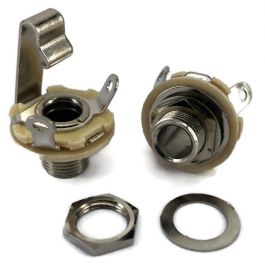dksucharda
New member
I think I got it! Thank you!!Correct. For example, the picture in the Aurum document is the typical way that pedalpcb shows the footswitch wiring.
I think I got it! Thank you!!Correct. For example, the picture in the Aurum document is the typical way that pedalpcb shows the footswitch wiring.
22 gauge wire is fine its what i use with no problems.So, it's official. I am making the Aurum. I think this will be a good 1st pedal. I saw a you tube video suggesting to use 22 gauge wire. However, I did not see anything in the PCB website about this and I did not see anything specific in the build document. Is this correct and is it the standard used in all pedals?



It is funny you should ask. I have 2 but one is an extremely cheap one. My other one is around $30 dollars but it is 20+ years old, not self ranging, and is not reading resistor (ohms) correctly at all. I have been doing a lot of research on different brands/models and have been arguing with myself about how nice of a multimeter I need to get. Mostly interested in building guitar pedals, amps, working on old stereo equipment, building speakers and other similar jobs. I would love some recommendations or guidance on specs I should be looking for.Good luck on your first build!
Do you have a multi meter? I didn’t have one when I started but quickly found out it is pretty useful/necessary. As a habit, I use it to check the footswitch, whether I use a mini board or not, and all the other wiring connections before I plug it in. I also use it to check all the resistors, in addition to using the color codes. Oh, which is another tip, I double and/or triple check the parts before I insert them PCB.
And when there is a problem, many times the guys here will want to know certain measurements to help diagnose what is wrong. I’ve been there several times
